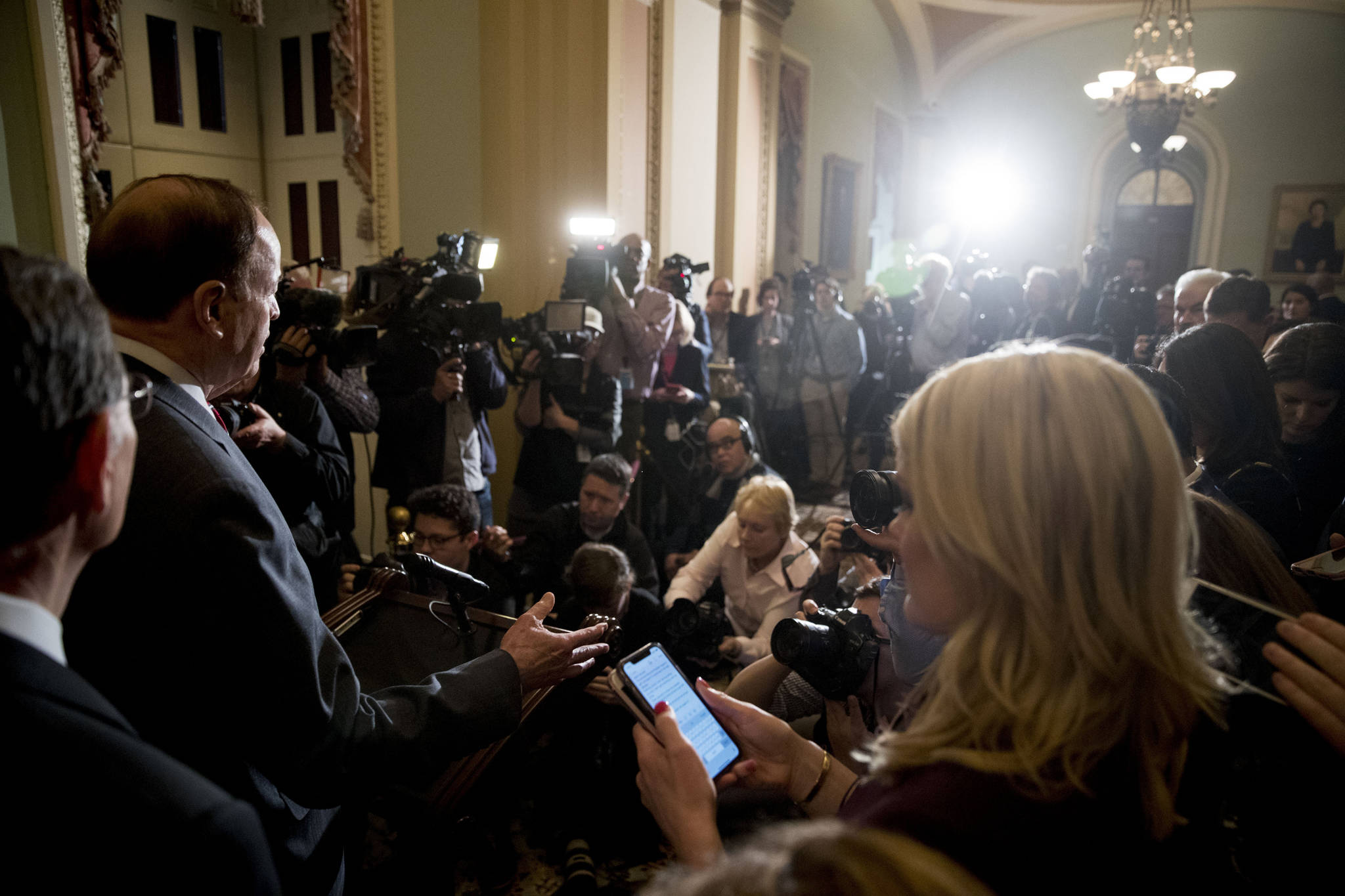“Get the story first, but first get it right.”
According to John Greely, that was “a motto that journalists used to try to follow.” The past tense reflects how reporters today are getting too many stories wrong. And their mistakes are magnified when newsroom editors fail to distinguish between news that matters and information that doesn’t.
Greely is a former journalist who spent decades covering Alaska politics. Speaking at Mudrooms on Tuesday, he described an erroneous story published by Associated Press in 1971 when he was a reporter for their Seattle office.
[Opinion: Pulp fiction won’t grow our economy]
The event was Cannikin, an underground nuclear weapons test on Amchitka. It was the third conducted on the island at the far end of the Aleutian chain. And the largest ever by the United States.
Greely said several reporters were on the island to cover the test. They planned to observe the effects of the blast from a “small hut” located “about a mile away from ground zero.” Immediately after it happened, the AP reporter told his colleague in Anchorage “the bomb went off and the building is shaking.”
The telephone relay of the story went on to Seattle and then to New York. From there they reported to the world the “U.S. government today detonated the largest nuclear device in the nation’s history, shaking in buildings in Anchorage, 1,300 miles away.”
In the rush to be first, the AP got it wrong. But the mistake was caused by the translation between the on-site reporter and the newsroom. It wasn’t motivated by political bias. Nor in pursuit of clicks and retweets for the media needs for attracting advertisers today.
Compare that to what the New York Times did last month when it ran a story under this headline: “Boys in ‘Make America Great Again’ Hats Mob Native Elder at Indigenous Peoples March.”
It’s old news now that the Times and many others were willfully misled by a video posted to social media which showed only a segment of what happened. None of them had reporters on the scene. None bothered to check with witnesses to make sure the video gave the complete picture.
A different example is a Washington Post story published on Monday under the headline “Rep. Liz Cheney says Elizabeth Warren is a ‘laughingstock’ for having claimed Native American ancestry.”
The Republican congresswoman made the remark to Jake Tapper on CNN a day earlier. He’d asked her about a tweet made by President Trump that morning regarding Sen. Elizabeth Warren’s announcement she’s running for president. It included what many considered an insensitive reference to the Trail of Tears — the tragic forced removal of the Cherokee people from their ancestral homelands.
“But Cheney declined to criticize” Trump for the tweet, the reporter wrote in the second paragraph. True enough, but that’s not enough to turn a caustic statement expressed on a televised talk show into a news story.
A third example is an Alaska Public Media story titled “State of the Union gets warm reception from Alaska delegation.”
They were was right to cover the speech. But having a reporter in Washington, D.C. doesn’t mean they got a newsworthy story. And they didn’t.
The first problem is they only spoke to Sen. Dan Sullivan. He said Trump “tried to create a unifying message that focused a lot on American history and American achievement” which he found “inspiring.” The reporter added “Sullivan also thinks Trump was helping to unify the country when he talked about the economy.”
[Dunleavy budget proposal would eliminate hundreds of jobs]
The source for rest of the story was a carefully crafted video press release from Sen. Lisa Murkowski and a message recorded by Rep. Don Young before the speech. Adding those to Sullivan’s opinions doesn’t make any of it a newsworthy story.
In the journalistic era that Greely spoke about, none of these would have made it past the editor’s desk. There’s still a desire to be first. But in today’s competition for quantity measured by clicks, substance and quality have become minor considerations.
“Democracy dies in darkness” became the Post’s front-page motto two years ago. It’s a reminder that the news media’s role is to shine the light on what our government is doing. But we won’t be any better off if they drown our democracy in a sea of worthless information.
• Rich Moniak is a Juneau resident and retired civil engineer with more than 25 years of experience working in the public sector. He contributes a weekly “My Turn” to the Juneau Empire. My Turns and Letters to the Editor represent the view of the author, not the view of the Juneau Empire.

